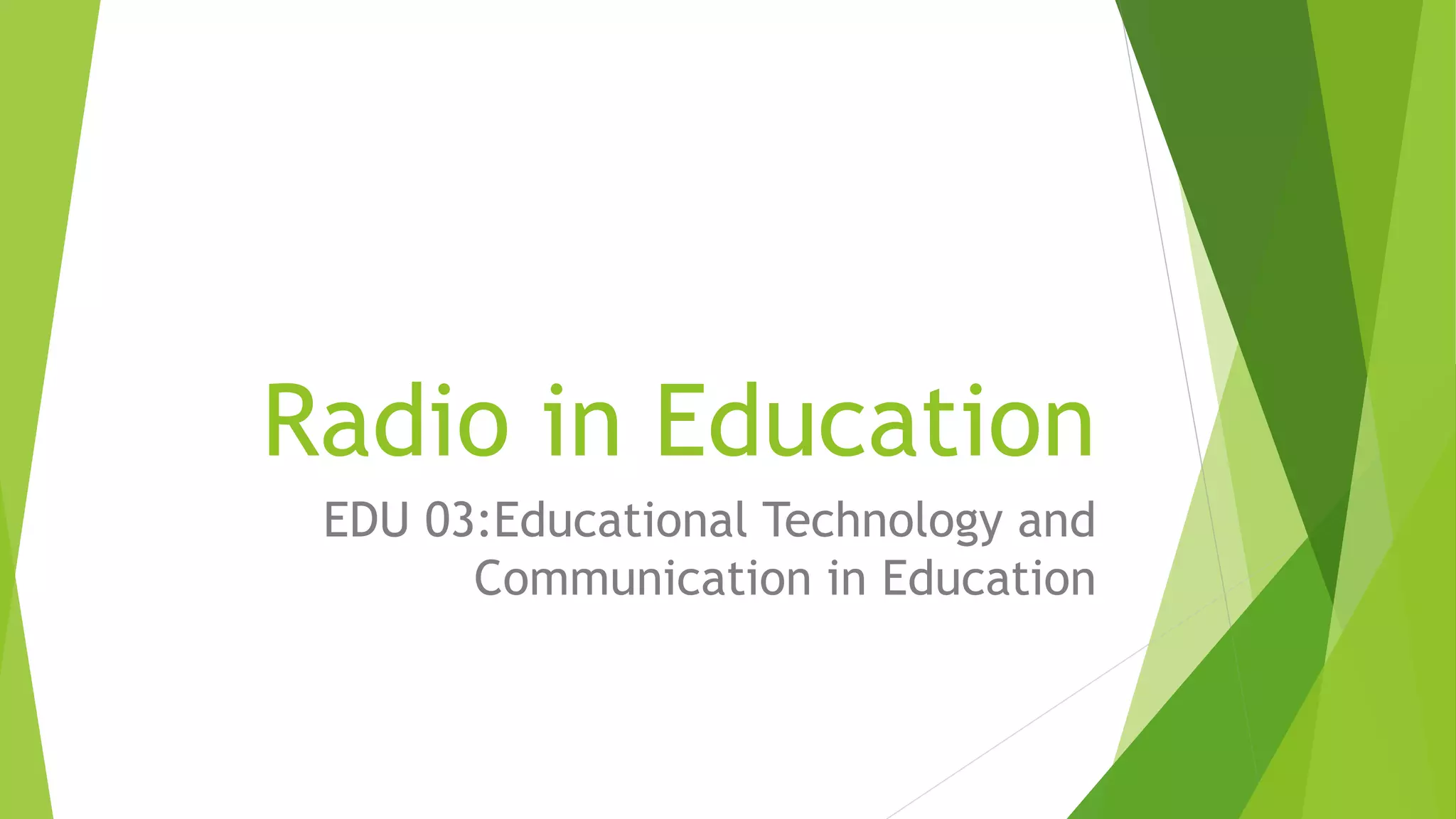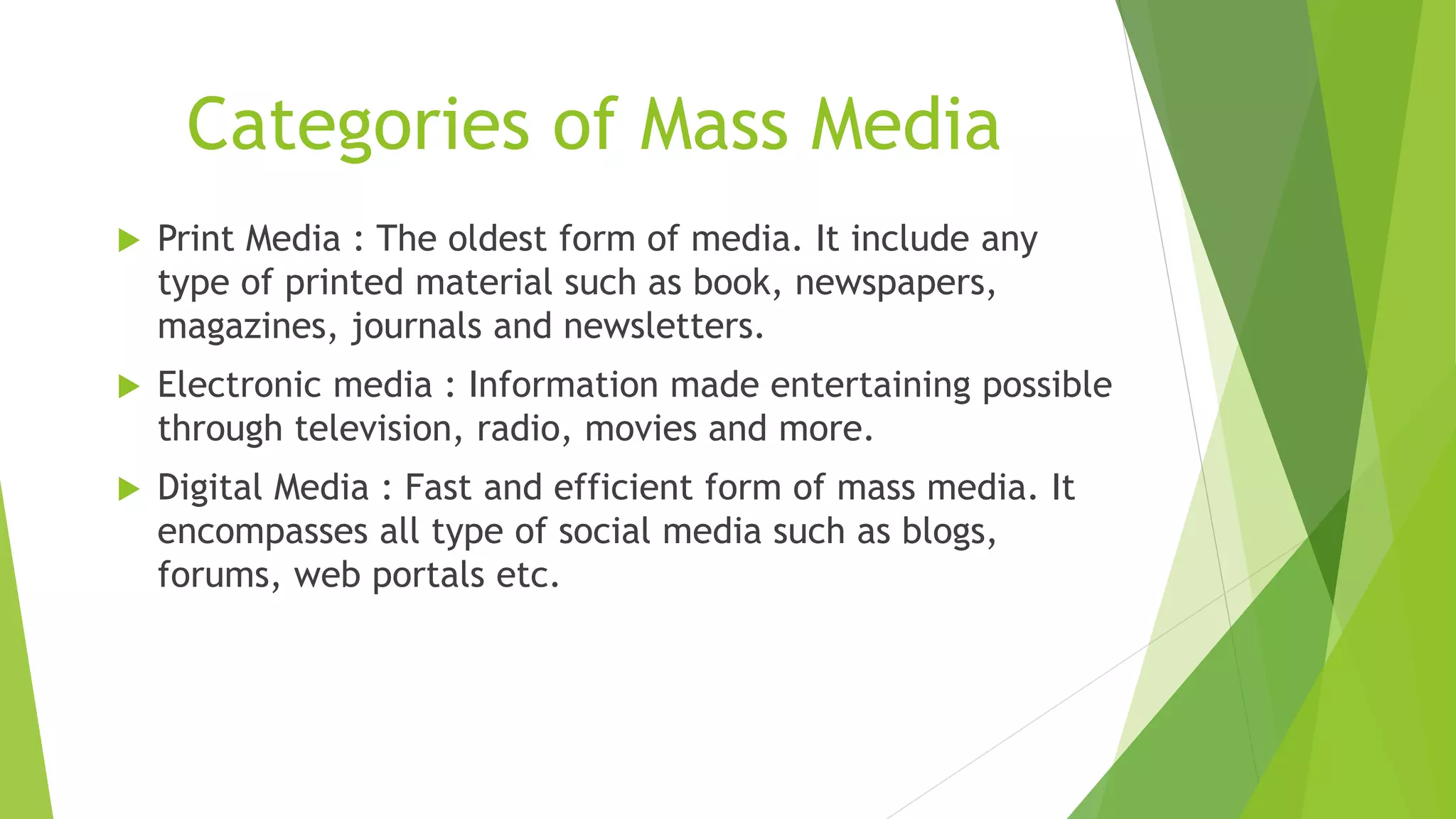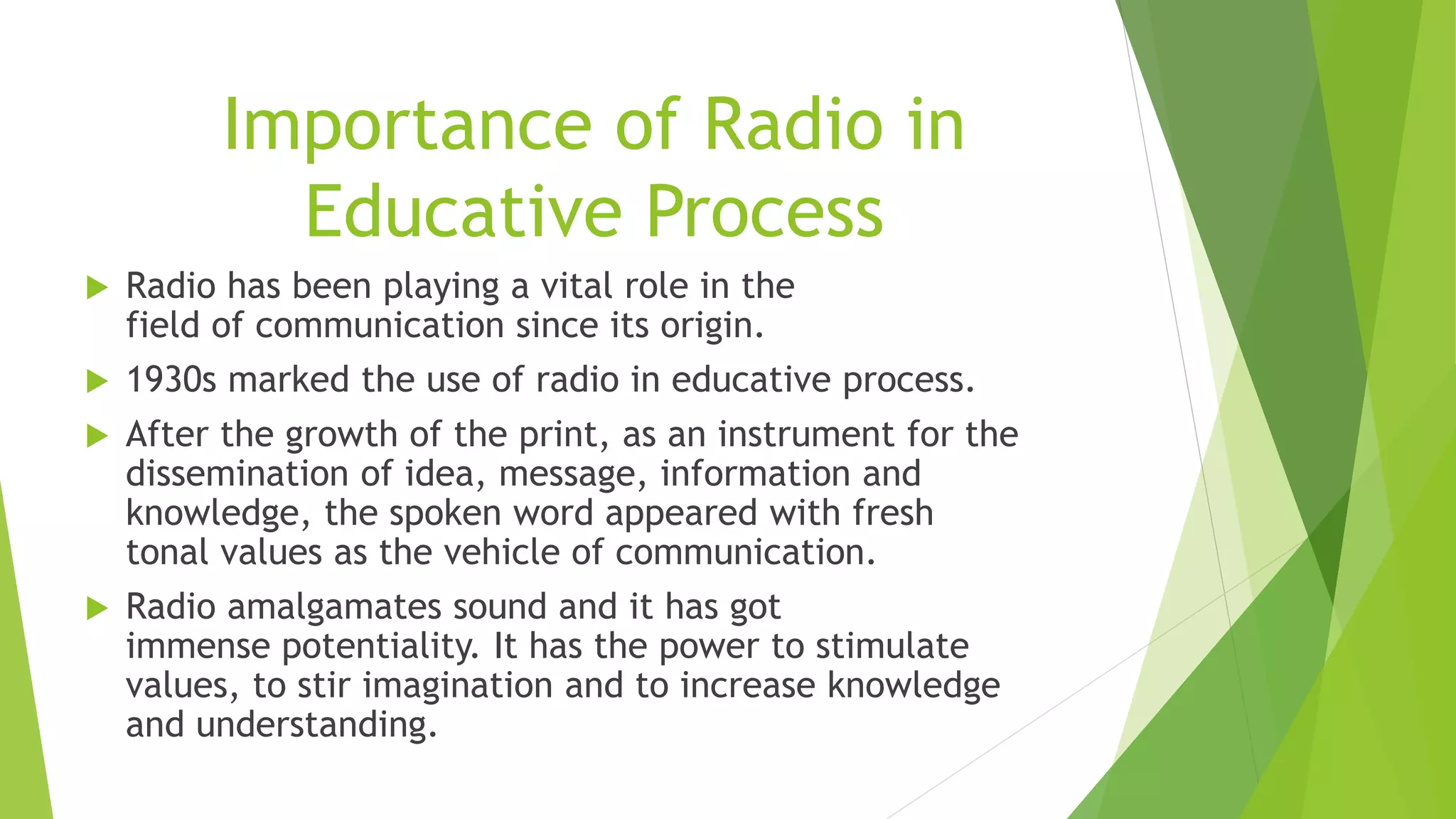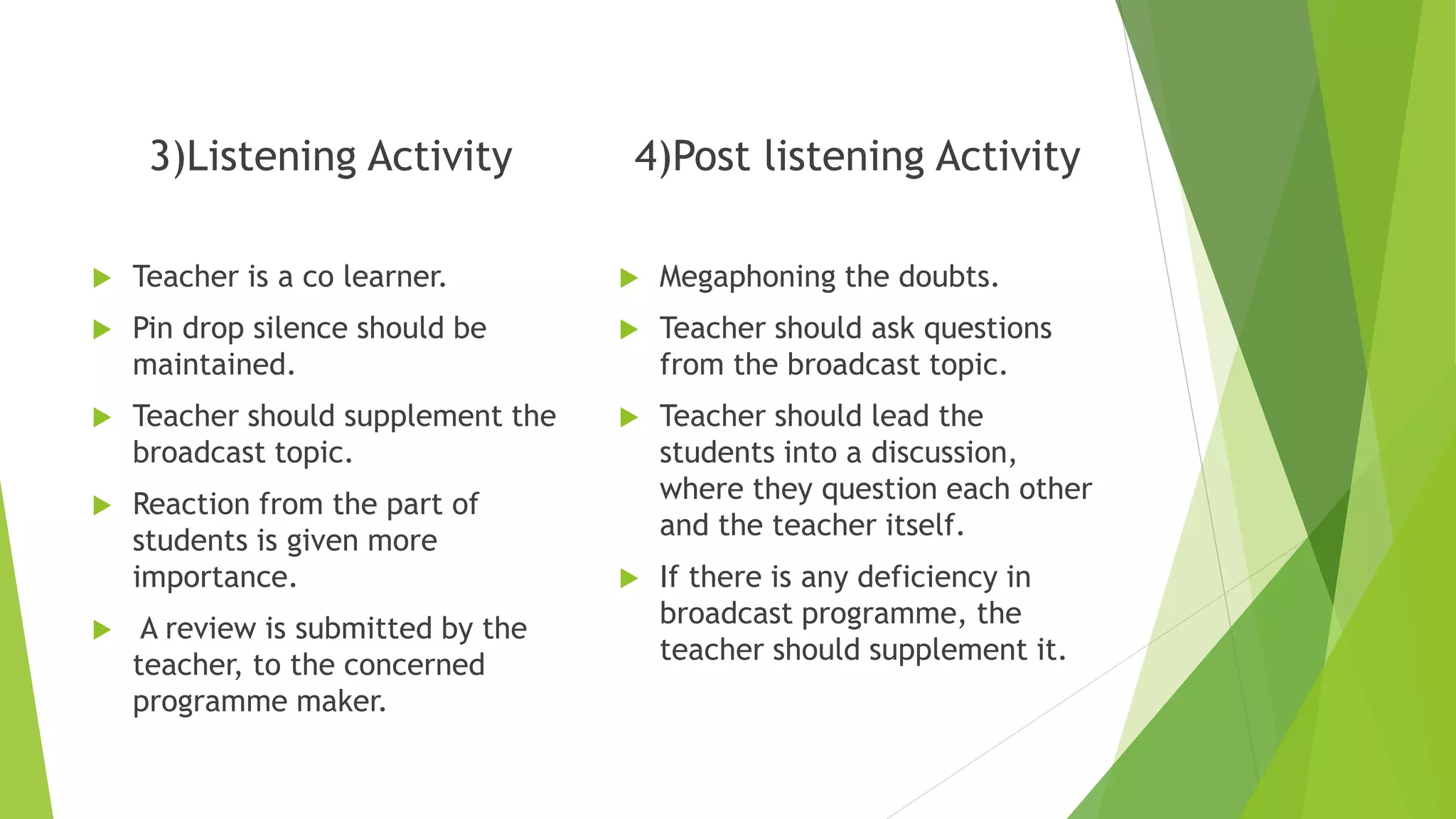Radio has played a vital role in education since the 1930s. It can extend the classroom by bringing worldwide experiences to students through narration and sounds. Radio benefits education by widening students' knowledge, transporting listeners through time and place, informing students of current events, developing values and imagination, and aiding visually impaired and slow learners. While it lacks interactivity and visuals, radio remains an effective educational tool due to its wide reach, low cost, and ability to supplement classroom learning. Major educational radio projects in India include school broadcasts, adult education programs, language learning initiatives, university broadcasts, IGNOU collaborations, and Gyan Vani educational content contributions.

















